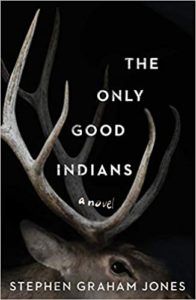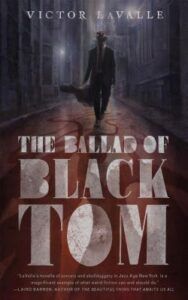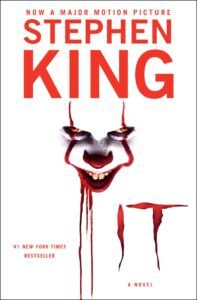Horror fans like to think of ourselves as weirdos. We want to be scared. We want to question the dark shadows in every corner. Surely that can’t be normal, right? Well, if loving horror is strange, there are a lot of strange people out there. Based on this recent report on book sales, horror fiction is the fifth most popular fiction genre, raking in about $79.6 million in the last year. Over at Goodreads, contributor Michael J. Seidlinger speculates that there has been a recent uptick in horror fiction sales because of unease surrounding the pandemic. Seidlinger noted that books like Grady Hendrix’s The Southern Book Club’s Guide to Slaying Vampires, Silvia Moreno-Garcia’s Mexican Gothic, and Stephen Graham Jones’s The Only Good Indians topped Goodreads’s “most anticipated” lists in 2020. In a time when people are so uncertain about the future, there’s something comforting about escaping into different terrors. But the horror genre isn’t new by any means. To understand the history of horror is to understand the history of humanity’s obsession with death. So much of what makes horror so appealing is how it allows readers to explore what frightens them, standing on the ledge between life and death without ever really having to risk falling. So when did the horror genre start, really? Probably around the same time we realized we’re all going to die some day.
Facts About the Horror Genre: Horror Trends Through Time
We know for sure that scary stories date all the way back to ancient Greeks and Romans. There’s even evidence suggesting that scary stories that were around back then don’t differ that greatly from the types of stories we tell today. “For example, the Roman author Pliny the Younger, in a letter to a friend of his that has survived the centuries, tells a wonderful little ghost story about a haunted house in Athens,” University of Massachusetts Amherst classics professor Debbie Felton says. “It’s a prototypical haunted house story: the horrific ghost of an old man scares everyone away, the house is deserted and falling into disrepair.” The 18th and 19th century saw a huge rise in horror fiction with the advent of the Gothic horror genre. Many consider Horace Walpole’s The Castle of Otranto to be the first true horror novel, inspired by medieval history and artifacts. Gothic literature is defined by its dark, atmospheric settings, its highly emotional storylines, and the exploration of frightening and grotesque themes. This literary movement produced some of the most popular and influential horror fiction ever created, including Frankenstein by Mary Shelley and Dracula by Bram Stoker, which are still the best-selling horror novels. In the 20th century, horror fiction remained popular, with authors creating new genres and redefining old ones. H.P. Lovecraft created a new genre called “cosmic horror” or “Lovecraftian horror,” which still remains influential to this day despite its problematic xenophobic and racist origins. Authors of color have since written horror stories reclaiming and redefining the genre while also critiquing the works of Lovecraft. For instance, Victor LaValle’s The Ballad of Black Tom. Then, of course there’s Shirley Jackson, whose horror novel The Haunting of Hill House redefined the haunted house story for 20th century horror fans. And while Jackson wrote across many genres, she’s most remembered for her deeply atmospheric and psychological horror stories. Jackson’s work has often been adapted. Most recently, The Haunting of Hill House was turned into a series on Netflix. An exploration of horror and its trends would be nothing without a nod to Stephen King. The horror author hit the ground running with his first novel Carrie in 1974, and King still dominates the horror genre to this day. King’s older novels continue to be read and adapted for the screen. And meanwhile, the author isn’t slowing down on writing new stories. There was a large patch of time during the 1990s and the 2000s where it really did seem like Stephen King was the only household name in the horror game, but the 2010s and the 2020s have been the beginning of a new boom in horror fiction. People have speculated that the interest in horror as a genre is partially thanks to the critically acclaimed horror films and television shows that have hit the screens lately. Yes, there’s The Haunting of Hill House, but also Stephen King’s IT was recently adapted into the highest-grossing horror film of all time, pulling in $327.48M worldwide. Then of course there’s Jordan Peele’s Academy Award-winning horror film Get Out. This movie has become one of publishers’ most favorite works to use as a comp when trying to sell their own horror stories. Art influences art, after all!
More Fun Facts About Horror Books and Authors
Looking for some more fun facts about the horror genre, horror books, and horror authors? Here’s are some quick facts and statistics that you might find interesting!
Shirley Jackson didn’t believe in ghosts. Although she wrote one of the most popular haunted house stories of all time, the story was not based on any supernatural beliefs or experiences of her own. Rather, she based her story on historical accounts of haunted houses. Think ghost hunting is new? Think again. Apparently, author Charles Dickens was a real-life ghost hunter. Maybe that’s where he got the inspiration for his supernatural Christmas story A Christmas Carol? Stephen King has Triskaidekaphobia, which is a fear of the number 13. Toni Morrison’s supernatural novel Beloved is actually based on a real story. Margaret Gardner ran away from her enslavers and ended up killing her daughter rather than allowing her to be returned to bondage. When she was put on trial, Gardner said that she would do it again. Morrison told The Paris Review, “That was more than enough to fire my imagination.” If you read Scary Stories to Tell in the Dark as a kid, then you probably still have nightmares about those terrifying illustrations. But illustrator Stephen Gammell actually won a Caldecott Medal for much lighter illustrations in Karen Ackerman’s Song and Dance Man in 1989. I wish someone had told me you didn’t need to have a writing degree to be a writer. Beloved horror author Paul Tremblay has written multiple best-selling novels, and he’s a “high school math teacher who never took a writing class.” You heard right! He teaches math! Silvia Moreno-Garcia’s bestselling novel Mexican Gothic is based on a real place. Moreno-Garcia told NPR, “The direct inspiration for this novel was a real town in Mexico that is located in kind of the middle part of the country in the mountains. It’s called Real del Monte or Mineral del Monte. It was mined by the Spanish first, and then in the 1800s, the British came and they started mining there. And that’s how it earned its nickname of ‘Little Cornwall.’” The Only Good Indians was a title that Stephen Graham Jones was conflicted about at first, because it’s referring to part of the derogatory phrase. But Jones says his intention was to take the power away from the slur by using it in the title. Jones said, “Every character in here is in their own way dealing with what it means to be a good Indian in 2020.” Tiffany D. Jackson’s new YA horror novel White Smoke is another novel that was inspired by true stories. “The hauntings that take place in White Smoke are based on real hauntings,” Jackson told Entertainment Weekly. “The scariest one for me was a story of a girl who kept getting little notes left in her apartment from a strange being. It completely freaked me out because she was living by herself, and I live by myself.”
Further Reading
You love horror, so of course you want to read even more about it. Here are 50 of the best horror books of the decade. And if you’re looking for more Indigenous horror fiction, here are 8 titles you’ll love. And here are 18 more new horror novels to keep you scared.






















